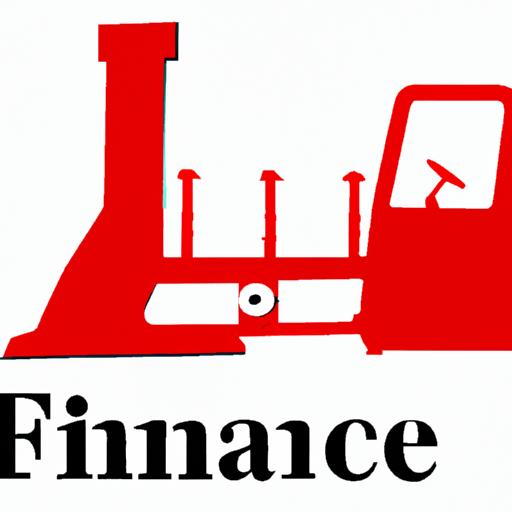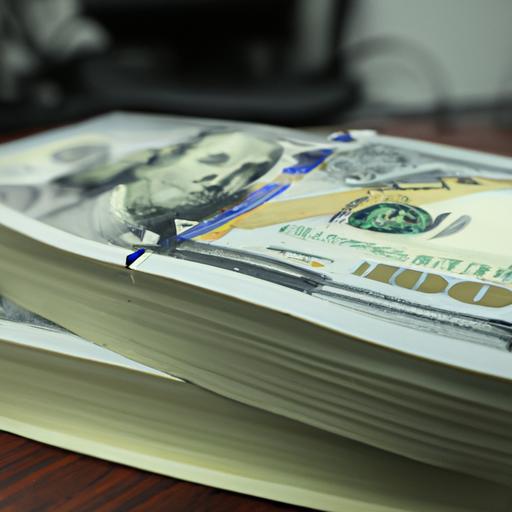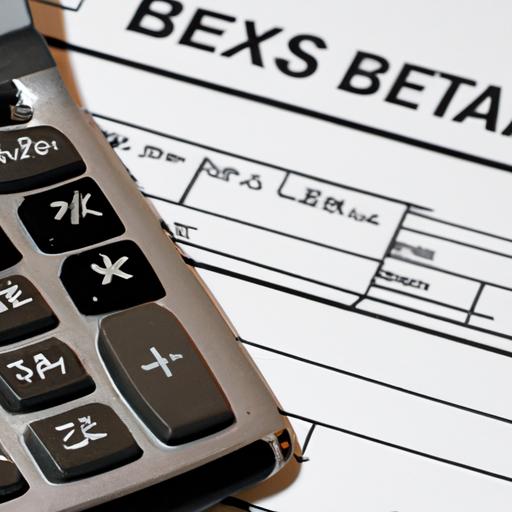Equipment Finance Tax Benefits: Maximizing Savings for Your Business

Introduction

Are you a business owner looking to acquire new equipment? The world of equipment finance offers a range of options to help you grow and succeed. But did you know that equipment finance also brings along some valuable tax benefits? Yes, you heard it right! By understanding and harnessing these tax advantages, you can significantly reduce your business expenses and maximize savings. In this article, I will provide you with a comprehensive guide on equipment finance tax benefits, ensuring you make the most informed decisions for your business.
When it comes to equipment finance, it refers to the various financing options available to acquire the necessary machinery, tools, or technology for your business operations. Whether you’re starting a new venture or expanding your existing enterprise, equipment finance can be a game-changer. Not only does it enable you to access high-quality equipment without a hefty upfront cost, but it also offers numerous tax benefits that can positively impact your bottom line.
Let’s delve into the tax benefits associated with equipment finance. By leveraging these advantages, you can save money, boost your cash flow, and reinvest in other areas of your business. With the right knowledge and expertise, you can navigate the complexities of tax regulations and make equipment finance work to your advantage.
Stay tuned for the rest of this article, where we will explore the different types of tax benefits in equipment finance and uncover the eligibility criteria for claiming these benefits. We will also discuss effective strategies to maximize tax benefits and ensure you’re making the most of your equipment finance decisions. So, let’s get started on this exciting journey towards optimizing your business’s financial success!
Stay tuned for the next section, where we’ll delve into the various types of tax benefits in equipment finance, including depreciation, Section 179 deduction, bonus depreciation, and interest expense deduction.
Understanding Equipment Finance Tax Benefits

Definition of Equipment Finance Tax Benefits
Before we dive deeper into the world of equipment finance tax benefits, let’s first understand what exactly they entail. Equipment finance tax benefits refer to the advantages and deductions that businesses can enjoy when financing their equipment purchases. These benefits are designed to incentivize businesses to invest in equipment, stimulate economic growth, and foster innovation.
When you finance equipment, instead of purchasing it outright, you can spread the cost of the equipment over time, making it more affordable and manageable for your business. This financing arrangement opens up a realm of tax benefits that can help reduce your overall tax liability and increase your savings.
Importance of Tax Benefits in Reducing Overall Business Expenses
Now that we know what equipment finance tax benefits are, let’s delve into why they are crucial for your business. Tax benefits play a pivotal role in reducing your overall business expenses, allowing you to keep more money in your pocket. By taking advantage of these benefits, you can effectively lower your tax burden and allocate those saved funds towards other essential areas of your business.
Reducing business expenses is a top priority for any organization, and equipment finance tax benefits provide a strategic avenue for achieving this goal. By maximizing tax deductions, accelerated depreciation, and interest expense deductions, you can significantly lower your taxable income, resulting in substantial savings. These savings can be reinvested in business growth, expansion, hiring new talent, or even upgrading your equipment further down the line.
In a highly competitive business landscape, every dollar saved counts. By understanding and leveraging equipment finance tax benefits, you can gain a competitive advantage, strengthen your financial position, and propel your business towards long-term success.
Stay tuned for the next section, where we will explore the various types of tax benefits in equipment finance, including depreciation, Section 179 deduction, bonus depreciation, and interest expense deduction.
Types of Tax Benefits in Equipment Finance

Depreciation: Maximizing Tax Savings
When it comes to equipment finance tax benefits, depreciation is a key factor to consider. Depreciation refers to the gradual decrease in the value of an asset over time due to wear and tear, obsolescence, or other factors. The IRS allows businesses to deduct a portion of the equipment’s cost as an expense over its useful life, providing significant tax benefits.
By depreciating your equipment, you can spread out the cost of the asset over several years, reducing your taxable income. This means you can deduct a portion of the equipment’s value each year, rather than taking the entire expense upfront. It’s like stretching out the tax benefits and saving you more money in the long run.
Section 179 Deduction: Unlocking Immediate Savings
Another valuable tax benefit in equipment finance is the Section 179 deduction. This deduction allows businesses to deduct the full purchase price of qualifying equipment in the year it is placed into service. It’s like a shortcut to immediate tax savings!
With the Section 179 deduction, you can deduct up to a certain dollar limit (currently set at $1,050,000 for 2021) of the equipment’s cost. This deduction is especially beneficial for small and medium-sized businesses, as it helps them invest in equipment while reducing their tax liability. It’s a win-win situation that promotes business growth and stimulates the economy.
Bonus Depreciation: Supercharging Your Tax Benefits
In addition to regular depreciation and the Section 179 deduction, there’s another fantastic tax benefit called bonus depreciation. This provision allows businesses to deduct a significant percentage (currently set at 100% for qualified property) of the equipment’s cost in the first year it is placed into service.
Bonus depreciation is particularly advantageous for businesses that invest in new equipment. It accelerates their tax savings, enabling them to deduct a substantial portion of the equipment’s cost immediately. By taking advantage of bonus depreciation, businesses can free up cash flow, reinvest in their operations, and stay ahead of the competition.
Interest Expense Deduction: Reducing the Cost of Financing
When financing equipment, businesses often incur interest expenses. The good news is that these interest expenses can also be tax-deductible. The interest expense deduction allows businesses to deduct the interest paid on their equipment financing arrangements, further reducing the overall cost of acquiring and maintaining the equipment.
By deducting the interest expenses associated with equipment finance, businesses can lower their taxable income, ultimately saving money. It’s like getting a discount on the financing cost, making equipment finance even more attractive.
In the next section, we will explore the eligibility criteria for equipment finance tax benefits. Understanding these criteria will help you determine if your equipment qualifies for these tax advantages.
Eligibility Criteria for Equipment Finance Tax Benefits
Criteria for equipment to qualify for tax benefits
To take advantage of the tax benefits offered through equipment finance, it’s essential to understand the eligibility criteria. Generally, the equipment must meet certain requirements to qualify for tax benefits. These criteria may include factors such as:
-
Business Use: The equipment should be primarily used for business purposes rather than personal use. This ensures that the tax benefits are applicable to assets that contribute directly to your business operations.
-
Depreciable Property: Tax benefits are typically associated with depreciable property, which refers to assets that have a limited useful life and can be expected to wear out, become obsolete, or lose value over time.
-
Qualified Equipment: Some tax benefits may be specific to certain types of equipment or industries. It’s crucial to understand whether the equipment you’re financing falls under the qualified categories to ensure eligibility for tax benefits.
Documentation and reporting requirements for claiming tax benefits
To claim the tax benefits associated with equipment finance, proper documentation and reporting are crucial. Here are some key aspects to consider:
-
Invoice and Lease Agreements: Keep copies of invoices and lease agreements to provide evidence of the equipment’s purchase or lease terms. These documents will help support your claim for tax benefits.
-
Asset Identification: Maintain records that clearly identify the equipment for which you are seeking tax benefits. This can include serial numbers, descriptions, and other relevant details.
-
Tax Forms: Depending on the type of tax benefit, you may need to fill out specific tax forms or schedules to claim the benefits. It’s important to stay updated on the current tax regulations and ensure accurate reporting.
Limitations and restrictions on tax benefits
While equipment finance tax benefits can be substantial, it’s crucial to be aware of any limitations or restrictions that may apply. Some common limitations include:
-
Annual Deduction Limits: Certain tax benefits, such as the Section 179 deduction, have annual limits on the amount that can be claimed. It’s important to understand these limits and plan your equipment purchases accordingly.
-
Qualifying Expenses: Tax benefits may only apply to certain expenses related to the equipment, such as the purchase price or installation costs. Other expenses, such as maintenance or repairs, may not be eligible for tax benefits.
-
Phase-Out Thresholds: Some tax benefits may be reduced or eliminated once your business’s total equipment purchases exceed a certain threshold. It’s essential to monitor these thresholds to optimize your tax benefits.
By understanding the eligibility criteria, documentation requirements, and limitations of equipment finance tax benefits, you can ensure that you meet the necessary conditions to claim these advantages successfully. In the next section, we will explore strategies to maximize your equipment finance tax benefits, allowing you to make the most of these valuable savings opportunities.
Maximizing Equipment Finance Tax Benefits
Implementing Effective Tax Planning Strategies
When it comes to maximizing the tax benefits of equipment finance, strategic tax planning plays a crucial role. By implementing effective tax planning strategies, you can optimize your savings and minimize your tax liability. Start by carefully analyzing your business’s financial situation and identifying the equipment finance tax benefits that align with your needs. Consider consulting with a tax professional to gain insights into the specific strategies that best suit your business.
One common strategy is to time your equipment purchases strategically. By understanding the current tax laws and regulations, you can plan your equipment acquisitions in a way that maximizes your tax benefits. For example, if you anticipate a higher tax rate in the upcoming year, it may be beneficial to make your equipment purchases in the current year to take advantage of the tax deductions available.
Leveraging Available Tax Incentives and Credits
In addition to depreciation and deduction options, there are various tax incentives and credits available that can further enhance your equipment finance tax benefits. These incentives and credits are designed to encourage businesses to invest in certain types of equipment or industries, stimulating economic growth and innovation.
Research and identify the tax incentives and credits that apply to your business and equipment financing needs. For instance, there may be credits available for investing in renewable energy equipment or purchasing equipment that promotes energy efficiency. By leveraging these incentives and credits, you not only reduce your tax liability but also contribute to a sustainable future.
Consulting with Tax Professionals to Ensure Maximum Benefit Utilization
Navigating the complexities of tax regulations can be challenging, especially when it comes to equipment finance tax benefits. To ensure you are maximizing your tax benefits and complying with all necessary requirements, it is highly recommended to work with tax professionals who specialize in equipment finance.
Tax professionals have in-depth knowledge of tax laws and regulations and can provide valuable guidance tailored to your specific business needs. They can help you identify all eligible tax benefits, assist in accurate documentation and reporting, and ensure compliance with any limitations or restrictions. Working with tax professionals not only saves you time and effort but also ensures that you are making the most of your equipment finance tax benefits.
Stay tuned for the conclusion of this article, where we’ll recap the key points discussed and emphasize the importance of equipment finance tax benefits for businesses.
Conclusion: So above is the Equipment Finance Tax Benefits: Maximizing Savings for Your Business article. Hopefully with this article you can help you in life, always follow and read our good articles on the website: WEEKLY NEWS



